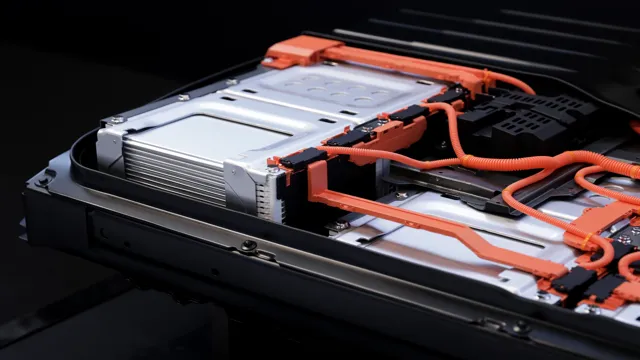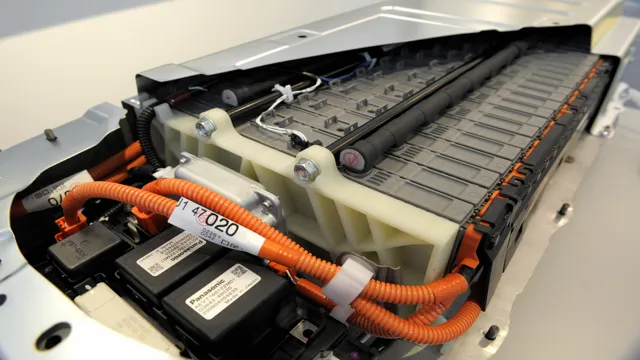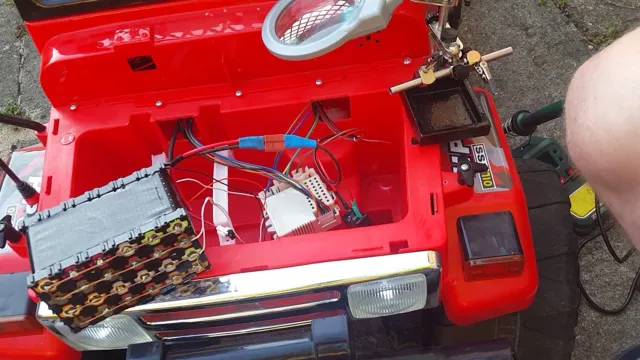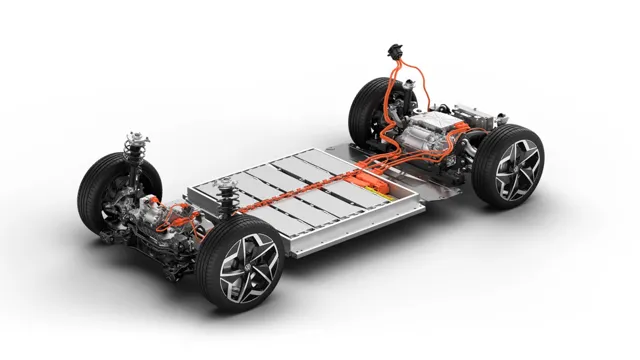Breaking the Myth: Yes, Electric Car Batteries Can Actually Charge While Driving – Here’s How!
Imagine cruising down the highway in your electric car, enjoying the scenery, without the constant worry of running out of battery. No more stopping at charging stations or planning your route around available charging points. With the advancements in technology, soon you may be able to charge your electric car batteries while driving! This could revolutionize the way we travel and make electric cars even more convenient and accessible for everyday use.
So, how does it work? Let’s explore the possibilities of charging electric car batteries while on the move.
Yes or no?
Many people wonder whether electric car batteries charge while driving. The answer is yes, in some cases. With regenerative braking, the kinetic energy produced by braking is captured and stored in the battery as electrical energy.
This process helps to charge the battery while driving. However, the amount of energy regenerated is not significant enough to fully recharge the battery. So, if you’re planning a long road trip with your electric car, it’s important to stop and recharge the battery periodically.
Charging at strategic points along the way is key to ensure you don’t run out of battery power on the road. It’s also important to note that not all electric cars have regenerative braking technology, so it’s important to research your specific car’s capabilities. In summary, while regenerative braking does help replenish some energy to the battery while driving, it’s not enough to completely charge it.
So, it’s essential to plan your trip to ensure you have enough battery power to get where you’re going.
Debunking myths about electric car batteries
Electric car batteries have been the subject of numerous myths and misconceptions, causing confusion amongst potential buyers. One of the most prevalent myths is that electric car batteries need to be replaced frequently. However, this is not true at all.
Most modern electric vehicle batteries are designed to last for over 100,000 miles before they need to be replaced. In fact, some manufacturers even offer warranties for up to eight years or 100,000 miles, whichever comes first. Another myth is that electric car batteries are dangerous and can cause fires.
While it is true that there have been some rare cases of battery fires, electric vehicles are no more dangerous than gasoline-powered cars. The battery packs are designed with multiple layers of protection to prevent dangerous situations from arising. So, in short, the myths about electric car batteries are just that – myths.
The truth is that advancements in battery technology have made electric vehicles a viable and reliable mode of transportation.
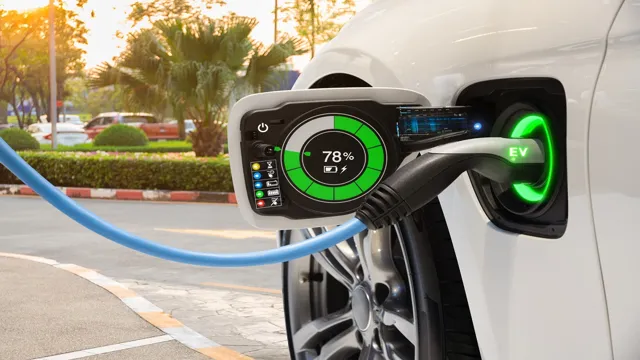
Understanding regenerative braking
Regenerative braking is a technology that is becoming increasingly popular in the automotive industry because of its eco-friendliness and efficiency. Its primary goal is to convert the kinetic energy that is generated during braking, which is typically lost as heat, into electrical energy. This energy is then stored in a battery and can be used to power a vehicle’s auxiliary equipment or even assist with the acceleration.
But the question on everyone’s mind is, does regenerative braking really work? The answer is a resounding yes. In fact, it has been shown to improve a vehicle’s fuel economy by up to 25% in certain conditions. However, while it’s a great technology, it’s important to note that regenerative braking may not be as effective in cold weather or in hilly terrain.
Overall, though, regenerative braking is a game-changing technology that is helping to make driving more environmentally friendly.
How charging while driving works
Yes, electric car batteries can charge while driving through a process called regenerative braking. This involves the electric motor reversing its direction and acting as a generator, which produces electricity as the car slows down. This electricity is then used to charge the battery.
Additionally, some electric cars come equipped with technology that allows them to charge the battery while driving using an external power source. For example, Tesla cars have a network of Superchargers, which provide a quick charge during a long trip. However, it is important to note that charging while driving will not fully recharge the battery, and it is still necessary to plug the car into a charging station to fully charge the battery.
Nonetheless, this feature is an excellent way to increase the range of electric cars and reduce the need for frequent stops to recharge the battery.
Explaining the science behind it
Charging while driving is becoming a popular concept in the world of electric cars. But how does it actually work? Well, it all comes down to the principle of electromagnetic induction. This involves using a charging pad on the ground that generates an electromagnetic field.
As the electric car passes over the charging pad, the electromagnetic field creates a current within the car’s receiver coil, which in turn charges the battery. This technology is similar to wireless phone charging, but on a much larger scale. The charging pad can be placed at designated locations, such as a parking lot or a road, allowing electric cars to charge while in motion.
The benefits of this technology are obvious, as it eliminates the need to stop and plug in at a charging station, allowing for a smoother and more convenient driving experience. With the increasing popularity of electric cars, charging while driving could be a game-changer, making electric vehicles an even more viable option for consumers.
Types of electric car charging
Electric car charging is crucial for the prolonged use of electric vehicles, and the technology for charging while driving is becoming increasingly popular. This feature is known as dynamic or inductive charging, and it allows drivers to charge their vehicles while driving on specially designed roads. The inductively charged roads use wireless technology to transmit power from the road surface to the car’s battery.
The concept is similar to the way an electric toothbrush charges wirelessly on its charging stand. This technology not only provides a convenient way to charge electric vehicles but also allows for larger and more powerful batteries to be used, increasing the range of electric vehicles. While charging while driving is still in its infancy, it has the potential to revolutionize the way we think about electric vehicle charging and usage.
Factors that affect charging while driving
Charging while driving has become increasingly popular in recent years, thanks to the growing number of electric vehicles (EVs) on the road. This technology allows drivers to charge their cars while they’re driving, making long trips more manageable. The charging process works by using induction technology, with pads located in the roadway transferring power wirelessly to a receiver in the car’s undercarriage.
Despite this simple process, many factors can affect the charging speed while driving. These include vehicle speed, road incline, battery level, coil alignment, and even weather conditions. For example, higher vehicle speeds provide less time for the car to receive a charge through the induction pads, decreasing the charging rate.
Similarly, uphill roads can also reduce charging speeds, while flat surfaces can maximize charging efficiency. Coil alignment is also critical, with a misaligned coil leading to a slower charging rate or even a complete lack of charging. Despite these factors, charging while driving demonstrates the potential of EVs to transform our transportation industry, making it greener and more sustainable.
Benefits of charging while driving
Many people wonder if electric car batteries charge while driving, and the answer is yes! Actually, it’s one of the biggest advantages of electric vehicles. Known as regenerative braking, this process is used by electric cars to generate energy while driving by converting the car’s kinetic energy into electrical energy and storing it in the battery. It works by using the electric motor as a generator when the driver presses the brakes, slowing down the vehicle and using the braking force to create energy that is fed back into the battery.
This system is highly efficient and helps extend the range of electric cars while reducing brake wear and tear. Plus, some electric vehicles also offer the option to charge the battery using an external source while driving, known as on-the-go charging, making it an even more convenient and sustainable option for transportation.
Increased range and convenience
One of the major benefits of charging while driving is that it increases the range of your electric vehicle (EV) and provides more convenience for drivers. When you charge while driving, you won’t have to worry about finding a charging station or waiting around for your car to charge. Instead, you can simply charge your EV as you drive, expanding your range and eliminating range anxiety.
This is particularly useful for those who frequently drive long distances or take road trips. Additionally, charging while driving can be more eco-friendly, as it reduces the need for stationary charging infrastructure and may result in less energy waste. Overall, charging while driving has the potential to make electric vehicles more practical and accessible for everyday drivers, helping to increase the adoption of EVs and reduce our dependence on fossil fuels.
Reduced charging time at charging stations
One of the greatest benefits of charging while driving is the reduced charging time at charging stations. As electric vehicles become more popular, charging stations are becoming more crowded, and it can take longer to charge your car. By charging your vehicle while driving, you can reduce the amount of time you need to spend at a charging station, as your car’s battery will already be partially charged.
This means you’ll spend less time waiting, and more time on the road. Plus, since you’ll be charging your car as you drive, you won’t need to worry as much about running out of battery life on long trips. It’s a win-win situation: you’ll save time and have a more enjoyable driving experience.
So why not give it a try and enjoy the benefits of reduced charging time while driving your electric car?
Conclusion and future of electric car batteries
Although some may hope for magic, unfortunately electric car batteries do not charge while driving (unless the car is equipped with regenerative braking). So, if you’re low on juice, you can’t just keep driving to top up your battery like you would a gas tank. But fear not, as technology continues to advance, who knows what the future holds for charging electric cars on the go.
Until then, let’s just enjoy the quiet ride and being kinder to the environment.”
FAQs
How do electric car batteries charge while driving?
Electric car batteries primarily charge while driving through regenerative braking, where the energy from braking is converted into electricity and stored in the battery. Some electric cars also have the option to charge while driving through a feature called “on-the-go” charging.
Can electric cars charge their batteries using solar power while driving?
While it is possible to charge an electric car’s battery using solar power, it is not possible to do so while driving. Solar panels require direct sunlight and a stationary vehicle for maximum efficiency.
What is the range of an electric car battery?
The range of an electric car battery can vary greatly depending on the make and model of the car, as well as driving habits and environmental conditions. However, most electric cars on the market today have a range between 100-300 miles on a single charge.
How long does it take to fully charge an electric car battery?
The time it takes to fully charge an electric car battery can vary depending on the type of charger being used and the size of the battery. For example, using a level 1 charger (120-volt, standard household outlet) can take up to 20 hours to fully charge a large electric car battery, while using a level 3 charger (480-volt, fast charger) can charge the battery up to 80% in 30 minutes.


